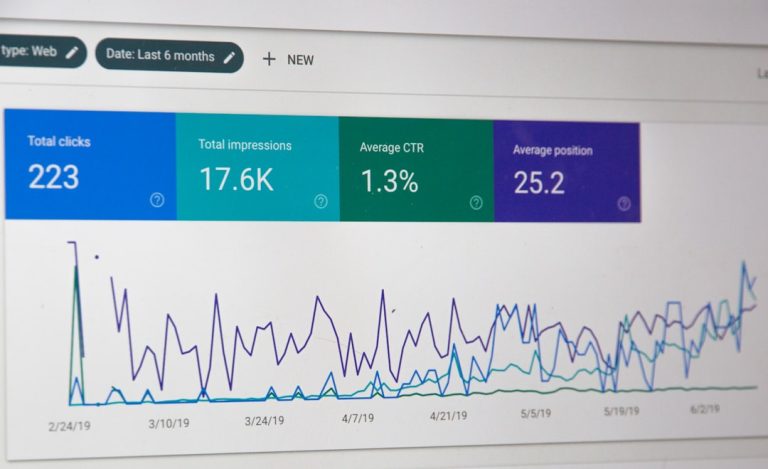Machine learning, a subset of artificial intelligence, has emerged as a transformative force in the realm of technology and data analysis. At its core, machine learning involves the development of algorithms that enable computers to learn from and make predictions based on data. Unlike traditional programming, where explicit instructions dictate the behavior of a system, machine learning allows computers to identify patterns and improve their performance over time without human intervention.
This capability is achieved through various techniques, including supervised learning, unsupervised learning, and reinforcement learning, each serving distinct purposes and applications. Supervised learning, for instance, relies on labeled datasets to train models, while unsupervised learning seeks to uncover hidden structures within unlabeled data. Reinforcement learning, on the other hand, involves training agents to make decisions by rewarding them for desirable actions, mimicking a trial-and-error approach.
The significance of machine learning extends beyond mere technical definitions; it represents a paradigm shift in how we interact with technology and process information. As vast amounts of data are generated daily—from social media interactions to sensor readings in smart devices—machine learning provides the tools necessary to extract meaningful insights from this deluge of information. The ability to analyze complex datasets quickly and accurately has profound implications for decision-making across various sectors.
For instance, businesses can leverage machine learning algorithms to optimize supply chains, enhance customer experiences, and predict market trends. In healthcare, machine learning models can assist in diagnosing diseases by analyzing medical images or patient records, ultimately leading to improved patient outcomes. Thus, understanding machine learning is not merely an academic exercise; it is essential for grasping the future trajectory of technology and its potential to reshape our world.
Key Takeaways
- Machine learning is a subset of artificial intelligence that allows systems to learn and improve from experience without being explicitly programmed.
- Machine learning has had a significant impact on various industries, including healthcare, finance, retail, and transportation, by improving efficiency, accuracy, and decision-making processes.
- Data plays a crucial role in machine learning, as it is used to train and improve the performance of machine learning models.
- Machine learning has real-life applications in areas such as recommendation systems, fraud detection, autonomous vehicles, and natural language processing.
- Challenges and ethical considerations in machine learning include bias in data, privacy concerns, and the potential for job displacement. The future of machine learning holds promise for advancements in areas such as healthcare, personalized marketing, and autonomous systems. Getting started with machine learning involves learning programming languages such as Python, understanding algorithms and models, and gaining practical experience through projects and competitions.
The Impact of Machine Learning on Various Industries
The influence of machine learning is pervasive, touching nearly every industry and revolutionizing traditional practices. In finance, for example, machine learning algorithms are employed to detect fraudulent transactions by analyzing patterns in spending behavior. These systems can process vast amounts of transaction data in real-time, identifying anomalies that may indicate fraud far more efficiently than human analysts could.
Additionally, predictive analytics powered by machine learning enables financial institutions to assess credit risk more accurately, leading to better lending decisions and reduced default rates. The ability to automate these processes not only enhances operational efficiency but also fosters a more secure financial environment for consumers and businesses alike. In the realm of retail, machine learning is reshaping how companies understand consumer behavior and manage inventory.
By analyzing customer purchase histories and preferences, retailers can personalize marketing strategies and recommend products tailored to individual tastes. This level of personalization not only enhances customer satisfaction but also drives sales by increasing conversion rates. Furthermore, machine learning algorithms can optimize inventory management by predicting demand fluctuations based on historical data and external factors such as seasonality or economic trends.
This predictive capability minimizes overstock situations and reduces waste, ultimately contributing to a more sustainable business model. As industries continue to embrace machine learning technologies, the potential for innovation and efficiency becomes increasingly apparent.
The Role of Data in Machine Learning

Data serves as the lifeblood of machine learning; without it, algorithms would lack the foundation necessary for training and validation. The quality and quantity of data directly influence the performance of machine learning models. High-quality datasets that are representative of the problem domain enable algorithms to learn effectively and generalize well to new, unseen data.
Conversely, poor-quality data—characterized by inaccuracies, biases, or incompleteness—can lead to flawed models that produce unreliable predictions. Therefore, data preprocessing becomes a critical step in the machine learning pipeline, involving tasks such as cleaning, normalization, and transformation to ensure that the dataset is suitable for training. Moreover, the advent of big data has further underscored the importance of data in machine learning.
With the exponential growth of data generated from various sources—ranging from social media platforms to IoT devices—machine learning models can now be trained on vast datasets that were previously unimaginable. This abundance of data allows for more nuanced insights and improved model accuracy. However, it also presents challenges related to data management and storage.
Organizations must develop robust strategies for handling large volumes of data while ensuring compliance with privacy regulations and ethical standards. As machine learning continues to evolve, the interplay between data quality and algorithmic performance will remain a focal point for researchers and practitioners alike.
Applications of Machine Learning in Real Life
| Application | Use Case |
|---|---|
| Healthcare | Diagnosis of diseases, personalized treatment plans, drug discovery |
| Finance | Fraud detection, risk assessment, algorithmic trading |
| Automotive | Self-driving cars, predictive maintenance, traffic prediction |
| Retail | Recommendation systems, demand forecasting, inventory management |
| Manufacturing | Quality control, predictive maintenance, supply chain optimization |
The applications of machine learning are as diverse as they are impactful, permeating various aspects of daily life and enhancing our experiences in numerous ways. In the realm of healthcare, for instance, machine learning algorithms are being utilized to analyze medical images such as X-rays and MRIs with remarkable accuracy. These systems can assist radiologists in identifying abnormalities that may be indicative of diseases like cancer or pneumonia at an early stage.
By augmenting human expertise with advanced analytical capabilities, machine learning not only improves diagnostic accuracy but also streamlines workflows within healthcare facilities, allowing medical professionals to focus on patient care rather than administrative tasks. In addition to healthcare, machine learning has made significant strides in the realm of transportation through the development of autonomous vehicles. Companies like Tesla and Waymo are leveraging sophisticated machine learning algorithms to enable cars to navigate complex environments safely.
These vehicles utilize a combination of sensors and cameras to gather real-time data about their surroundings, which is then processed by machine learning models that make split-second decisions regarding acceleration, braking, and steering. The implications of this technology extend beyond mere convenience; they promise to reduce traffic accidents caused by human error while also optimizing traffic flow in urban areas. As these applications continue to evolve, they hold the potential to redefine our relationship with transportation and mobility.
Challenges and Ethical Considerations in Machine Learning
Despite its transformative potential, machine learning is not without its challenges and ethical dilemmas. One significant concern revolves around bias in algorithms, which can arise from skewed training data or flawed model design. When machine learning systems are trained on datasets that reflect societal biases—whether related to race, gender, or socioeconomic status—they may inadvertently perpetuate these biases in their predictions and decisions.
This phenomenon has far-reaching implications, particularly in sensitive areas such as hiring practices or criminal justice systems where biased algorithms can lead to unfair treatment of individuals based on their demographic characteristics. Addressing these biases requires a concerted effort from researchers and practitioners to ensure that datasets are representative and that models are rigorously tested for fairness. Another pressing ethical consideration pertains to privacy and data security.
As machine learning systems increasingly rely on personal data for training purposes—such as user behavior on social media or health records—there is a growing need for transparency regarding how this data is collected, stored, and utilized. Individuals must be informed about their rights concerning their personal information and how it may be used by organizations employing machine learning technologies. Striking a balance between leveraging data for innovation while safeguarding individual privacy is a complex challenge that necessitates collaboration between technologists, policymakers, and ethicists.
As society navigates these challenges, fostering an ethical framework for machine learning will be crucial in ensuring that its benefits are realized equitably.
The Future of Machine Learning

Looking ahead, the future of machine learning appears both promising and complex as advancements continue to unfold at an unprecedented pace. One area poised for significant growth is the integration of machine learning with other emerging technologies such as quantum computing and edge computing. Quantum computing has the potential to revolutionize machine learning by enabling faster processing speeds and more complex calculations than classical computers can achieve.
This could lead to breakthroughs in areas such as drug discovery or climate modeling where traditional computational methods fall short due to their limitations in handling vast datasets or intricate simulations. Moreover, as machine learning becomes increasingly embedded in everyday applications—from virtual assistants like Siri and Alexa to recommendation systems on streaming platforms—the demand for skilled professionals in this field will continue to rise. Educational institutions are beginning to respond by offering specialized programs focused on artificial intelligence and machine learning, equipping the next generation with the knowledge necessary to navigate this evolving landscape.
However, as technology advances rapidly, there will also be a pressing need for ongoing education and upskilling among current professionals to keep pace with new developments. The future landscape will likely be characterized by collaboration between humans and machines, where augmented intelligence enhances decision-making processes across various domains.
How to Get Started with Machine Learning
For those interested in embarking on a journey into the world of machine learning, there are several pathways one can take to build foundational knowledge and skills. A solid starting point involves gaining proficiency in programming languages commonly used in the field, such as Python or R. These languages offer extensive libraries—like TensorFlow or scikit-learn—that facilitate the implementation of machine learning algorithms without requiring deep mathematical expertise initially.
Online platforms such as Coursera or edX provide accessible courses tailored for beginners that cover both theoretical concepts and practical applications through hands-on projects. In addition to formal education resources, engaging with online communities can significantly enhance one’s understanding of machine learning concepts. Platforms like GitHub allow aspiring practitioners to explore open-source projects where they can contribute code or learn from existing implementations.
Participating in forums such as Kaggle not only provides opportunities for practical experience through competitions but also fosters collaboration with peers who share similar interests in data science and machine learning. By combining structured learning with community engagement and practical application, individuals can effectively navigate their entry into this dynamic field while building a robust skill set that prepares them for future challenges in machine learning.
If you’re interested in learning more about how websites handle user data and privacy, particularly in the context of machine learning applications, you might find the Cookie Policy of Bongoc.top insightful. Understanding their cookie policy can provide clarity on how data collected from users is utilized, potentially for machine learning algorithms to enhance user experience. You can read more about their specific practices and guidelines by visiting their Cookie Policy page. This information is crucial for anyone concerned with how their personal information is managed and used online.
FAQs
What is machine learning?
Machine learning is a subset of artificial intelligence that involves the development of algorithms and statistical models that enable computers to improve their performance on a specific task through experience, without being explicitly programmed.
How does machine learning work?
Machine learning algorithms use training data to learn patterns and make predictions or decisions without being explicitly programmed. The algorithms are trained using labeled data, and then they make predictions or decisions based on new, unseen data.
What are the types of machine learning?
There are three main types of machine learning: supervised learning, unsupervised learning, and reinforcement learning. Supervised learning involves training a model on labeled data. Unsupervised learning involves finding patterns in unlabeled data. Reinforcement learning involves training a model to make sequences of decisions.
What are some applications of machine learning?
Machine learning is used in a wide range of applications, including image and speech recognition, medical diagnosis, recommendation systems, financial forecasting, and autonomous vehicles.
What are some popular machine learning algorithms?
Some popular machine learning algorithms include linear regression, logistic regression, decision trees, random forests, support vector machines, k-nearest neighbors, and neural networks.
What are the benefits of machine learning?
Machine learning can automate and optimize complex tasks, improve decision-making processes, and uncover insights from large datasets. It can also lead to the development of innovative products and services.















